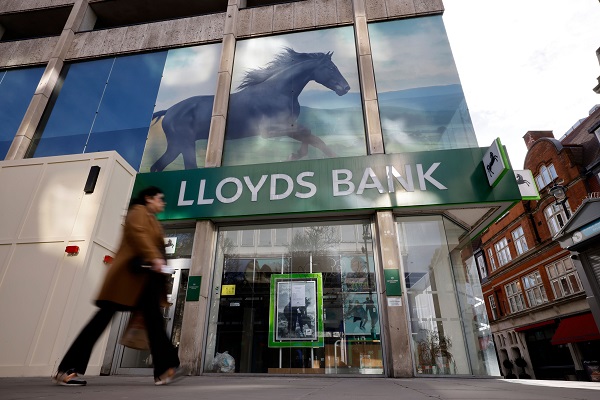Lloyds Bank shares soar on impressive results and dividend boost
27th July 2022 08:09
by Richard Hunter from interactive investor
After underperforming rivals over the past year, Lloyds finally has something to cheer about. Our head of markets runs through the big talking points in these half-year results.

Despite an increasingly challenging economic backdrop in the UK, Lloyds Banking Group (LSE:LLOY) has made an impressive start to the year on most metrics.
At the headline level, the reduction in profits can be almost solely attributed to further credit impairment provisions, as the group positions for the potential of credit deterioration.
This is not yet being seen, with many customers showing some resilience and actually increasing savings, but the provision of £377 million for the half-year compares with a release of £734 million in the corresponding period last year, and this £1.1 billion swing has inevitably punched a hole in profits.
- Invest with ii: Top UK Shares | Share Tips & Ideas | Open a Trading Account
Excluding the provision, underlying profit has increased by 34%, showing the strength of the business model. In particular, net income for the half-year has increased by 12%, including a second-quarter contribution of £4.3 billion against an expected £4.1 billion. For the second quarter, pre-tax profit was virtually flat year on year, but nonetheless came in ahead of expectations.
- Are Lloyds Bank shares heading up to pre-pandemic prices?
- The Week Ahead: Lloyds Bank, Shell, Centrica, BT, Vodafone
- UK bank sector results season: these are the likely winners
Nor is there any doubting the financial strength on which Lloyds can rely. The Liquidity Coverage ratio rose to 142% from an already comfortable 131%, the capital cushion, or CET1 ratio was also higher than expected at 14.7% and ahead of the bank’s 12.5% target, while an increase in operating costs was largely due to planned strategic investments.
Interest rates are rising but remain low by historical standards, yet increases have made a positive impact, with the Net Interest Margin number rising to almost 2.8%, and Net Interest Income 13% higher. The cost/income ratio remains the one to beat in the sector, currently standing at 51.2% versus 59.2% last year.
The capital strength and cash generation has also enabled an increase to the dividend, which now stands on a projected yield of 4.9%. Quite apart from being a show of confidence by management, the yield is comfortably in excess of the average for the FTSE 100 and provides significant attraction to income-starved investors.
Further investment in the business, especially the Wealth offering, and a determined drive towards a more digital future should lead to higher income and lower costs in due course, and Lloyds continues to make this progress on an incremental basis.
In the meantime, the group has upped its guidance for the rest of the year, with notable increases to its Net Interest Margin and return on Tangible Equity projections.
The share price has struggled to keep pace with this progress, partly given the fact that it is often seen as a barometer of the UK economy. The shares have dropped by 6.5% over the last year, as compared to a gain of 4.4% for the wider FTSE100, although the fact that the bank has increased its guidance should engender stronger confidence, as evidenced by the initial price reaction to the numbers.
- 12 stocks for dividend investors hunting for high yields
- Dividend yield: three tips to help build your investment wealth
Indeed, and without exception, the market consensus of UK banks is currently positive. Lloyds may no longer be the pick of the bunch given lingering concerns around the state of the UK economy, but the general view of the shares as a "buy" reflects confidence in the bank’s ability to keep a firm hand on the tiller.
These articles are provided for information purposes only. Occasionally, an opinion about whether to buy or sell a specific investment may be provided by third parties. The content is not intended to be a personal recommendation to buy or sell any financial instrument or product, or to adopt any investment strategy as it is not provided based on an assessment of your investing knowledge and experience, your financial situation or your investment objectives. The value of your investments, and the income derived from them, may go down as well as up. You may not get back all the money that you invest. The investments referred to in this article may not be suitable for all investors, and if in doubt, an investor should seek advice from a qualified investment adviser.
Full performance can be found on the company or index summary page on the interactive investor website. Simply click on the company's or index name highlighted in the article.